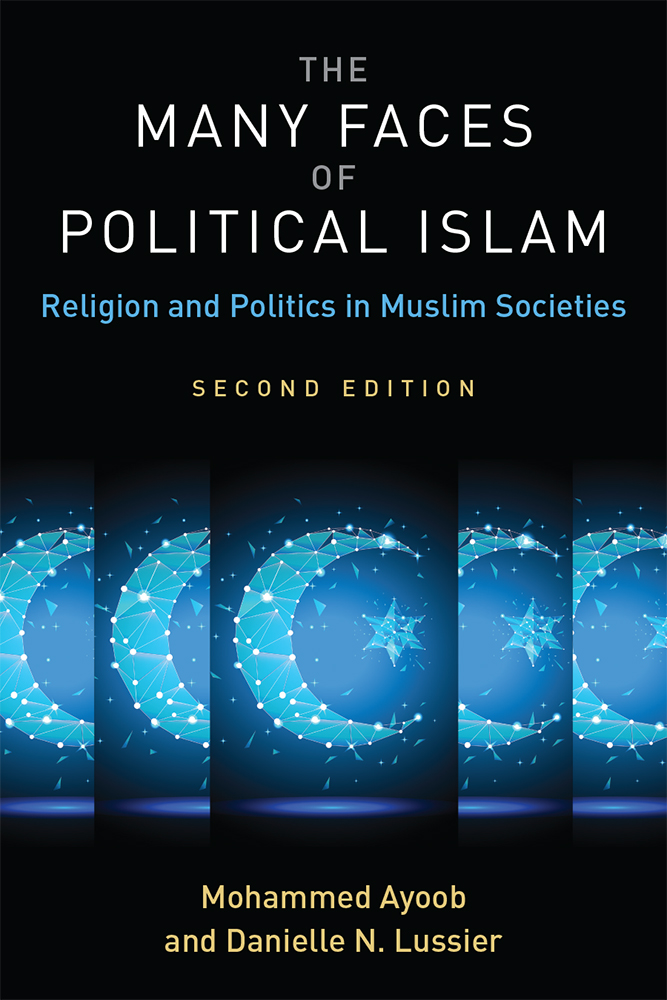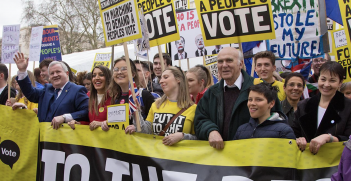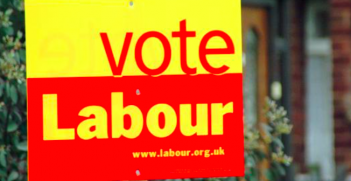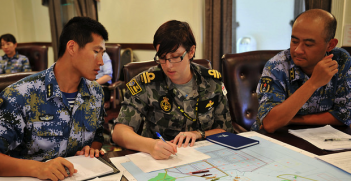Book Review: The Many Faces of Political Islam: Religion and Politics in Muslim Societies

Mohammed Ayoob and Danielle N. Lussier demonstrate both an impressive breadth and depth of expertise. The second edition of The Many Faces of Political Islam follows Ayoob’s first edition, encompassing the many changes that have occurred throughout the Muslim world during the last decade.
These include, inter alia, the Arab uprisings from 2011, the killing of Osama Bin Laden, the ongoing Syrian Civil War, the dramatic rise and fall of the Islamic State group or ISIS, increased authoritarianism and the undermining of democratic norms in Turkey, as well as the proliferation of Islamist violence in sub-Saharan Africa. It is marketed as an accessible introductory text exploring the multifaceted nature of political Islam or Islamism, yet extremely thorough such that advanced readers will learn much too.
The purpose of the book is to serve as an antidote to the Orientalist stereotypes, falsehoods, and hysteria propagated by the mainstream media and attendant “experts,” opportunistic politicians, and certain segments of the academic sector, vis-à-vis political Islam. These views are largely essentialist and portray Islamist actors as monolithic, unable to separate politics from religion, and inherently violent. They depict such actors as being driven by an immutable Islam, unchanged since its inception in the seventh century.
Viewed from a historical or analytical perspective, these characterisations are, of course, preposterous, but they have gained much traction, especially in the West. This has exacerbated following both the 11 September attacks in 2001, and then, once again, during the dramatic rise and fall of ISIS from 2014.
Ayoob and Lussier seek to dispel such views by examining political Islam – or the instrumentalisation of Islam for political purposes – as a multidimensional phenomenon. This is despite the prima facie similarities of many Islamist actors, especially regarding their common use of idioms, rhetoric, and symbolism. Instead, the authors explain, the use of Islamic symbolism is pragmatic, outlining how Muslims are socialised to recognise common symbols from childhood. In effect, the book explains how utilisation of Islamic symbolism is an effective means of political mobilisation. In recognising this, the book encourages readers to conceptualise political Islams or Islamisms (plural), rather than the singular political Islam or Islamism.
To investigate political Islam as a multifaceted phenomenon, the authors identify four ideal types of Islamist actors: vanguard (i.e., in the Leninist sense of “professional revolutionaries”), nonviolent political parties, national resistance organisations (centred on national self-determination and liberation from foreign rule), and violent transnational actors. As ideal types though, it is important to note that actors may not tick every box of a particular designation. Actors, moreover, may bridge different categories and often evolve over time. At various points in its history, for instance, the Egyptian Muslim Brotherhood has acted as a grassroots charitable organisation, as militant extremists, and as the ruling party of Egypt, among others.
Most of the core chapters of the book comprise detailed comparative case studies of these four ideal types of Islamist actors throughout the Muslim world. The analyses of these actors are further filtered through the typology of political objectives, electoral participation, and the use of violence. It is important to note, however, that objectives and actions of such Islamist actors are heavily conditioned by the political environment in which they operate. This includes consideration of the nature of the regime they oppose (with the exception of the case studies on self-proclaimed ‘Islamic’ states of Saudi Arabia and Iran) and foreign policy interventions by external powers. As such, many manifestations of contemporary political Islam are framed in terms of resistance to injustice, oppression and foreign domination.
To this end, the authors argue that the vast majority of Islamists are motivated by localised grievances, usually framed within a national context. They identify transnational jihadist groups such as ISIS and al-Qaeda as exceptions, despite the outsized attention they garner. With the exception of the chapter on violent transnational movements, the case studies examine political Islam at a local, national level.
In my view, however, the most powerful chapters, both from a conceptual point of view and in acting as a corrective for mainstream stereotypes, are the first two chapters. Here, the authors demolish many of Orientalist tropes salient in contemporary Western discourses which posit that Islamist ideologies are merely a continuation of archaic traditions dating from the seventh century. The authors, conversely, demonstrate that political Islam is a relatively recent phenomenon dating from the 18th and 19th centuries, which emerged in opposition to Western expansionism following 1000 years of Muslim dominance. Western dominance was thus viewed by Islamists as an inversion of a divinely ordained order.
A common theme of Islamists, according to Ayoob and Lussier, is their reimagining of a putative Golden Age of Islam embodied by idealised conceptions of the first Muslim polity in the city of Medina, first governed by the Prophet Muhammad followed by the four “right-guided” Caliphs (successors). In doing so, the authors posit, Islamists, in essence, de-historicise the evolution of Islam and strip it of what they view as impure accretions. In the eyes of Islamists, these accretions, viewed as straying from the righteous path of Islam, explain the current parlous state of the Muslim world. Thus, it is necessary to return to the “pristine” state of the original Muslim community to rectify this.
The issue here is that all of this is very vague. Indeed, the concept of the Medina model is mentioned at various points throughout the book, but what this means in practical terms is never really elucidated upon. It may also seem somewhat ironic that Islamists invoke this period as an idealised time, given that three of the first four Caliphs were assassinated. In a similar vein, the authors stipulate that a general characteristic of Islamists is that they seek to imitate the first Muslim community, but never adequately explain that Shi’a Muslims do not recognise the first three Caliphs as legitimate. Rather, Shi’a Muslims regard the first three Caliphs as usurpers. As such, how are we to reconcile such general characteristics vis-à-vis Sunni and Shi’a Islamists and their conceptions of this putative Golden Age? Thus, there are some instances throughout the book that presuppose some assumed knowledge, especially vis-à-vis early Islam.
The final case study investigates violent transnational Islamist actors, namely al-Qaeda, ISIS, and Boko Haram. Even more so than political Islam in general, the existence of such actors is an extremely recent phenomenon spanning only a few decades. Indeed, Ayoob and Lussier contend that it was, ironically, the United States which facilitated the rise of actors like al-Qaeda and ISIS by creating nexus points for a diverse array of militant Islamists to gather, network, and combine forces in Afghanistan and Iraq. Nonetheless, the authors argue that there is too much emphasis placed on these actors, especially in the West, as they have very little relevance to the quotidian life of the vast majority of Muslims.
Overall, this is impressive and informative work investigating some of the many faces of political Islam. It does an excellent job of dispelling mainstream stereotypes regarding Islamism and contextually rooting Islamist movements in their localised settings. As such, Ayoob and Lussier provide an important corrective to Orientalist stereotypes that have flourished vis-à-vis political Islam in the 21st Century.
Dr Tristan Dunning is a sessional lecturer at the University of the Sunshine Coast and an honorary research fellow at the University of Queensland. He is the author of Hamas, Jihad and Popular Legitimacy: Reinterpreting Resistance in Palestine (2016) and the editor of Palestine: Past and Present (2019). Follow him on Twitter: @trisdunning
This article is published under a Creative Commons License and may be republished with attribution.





